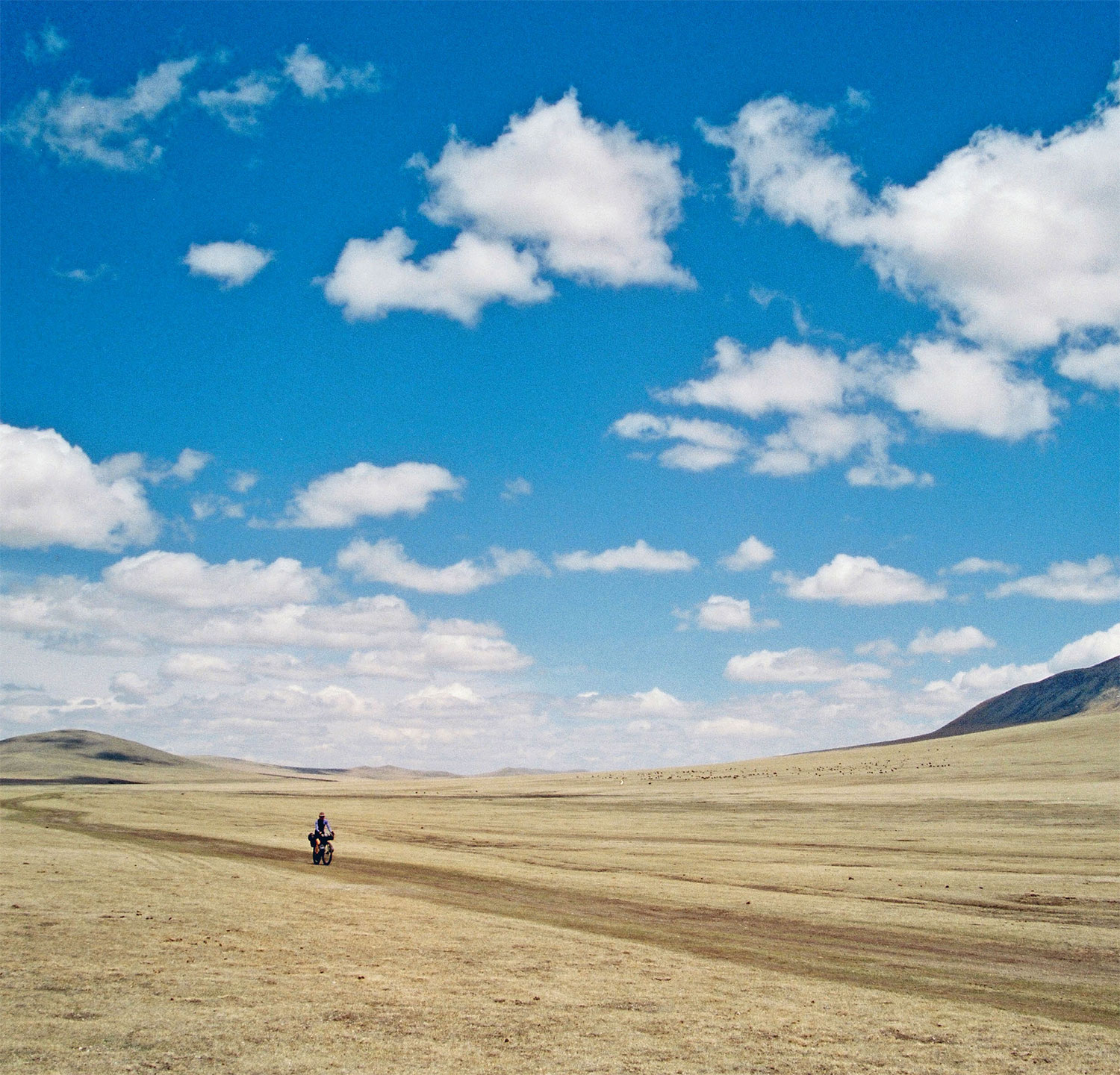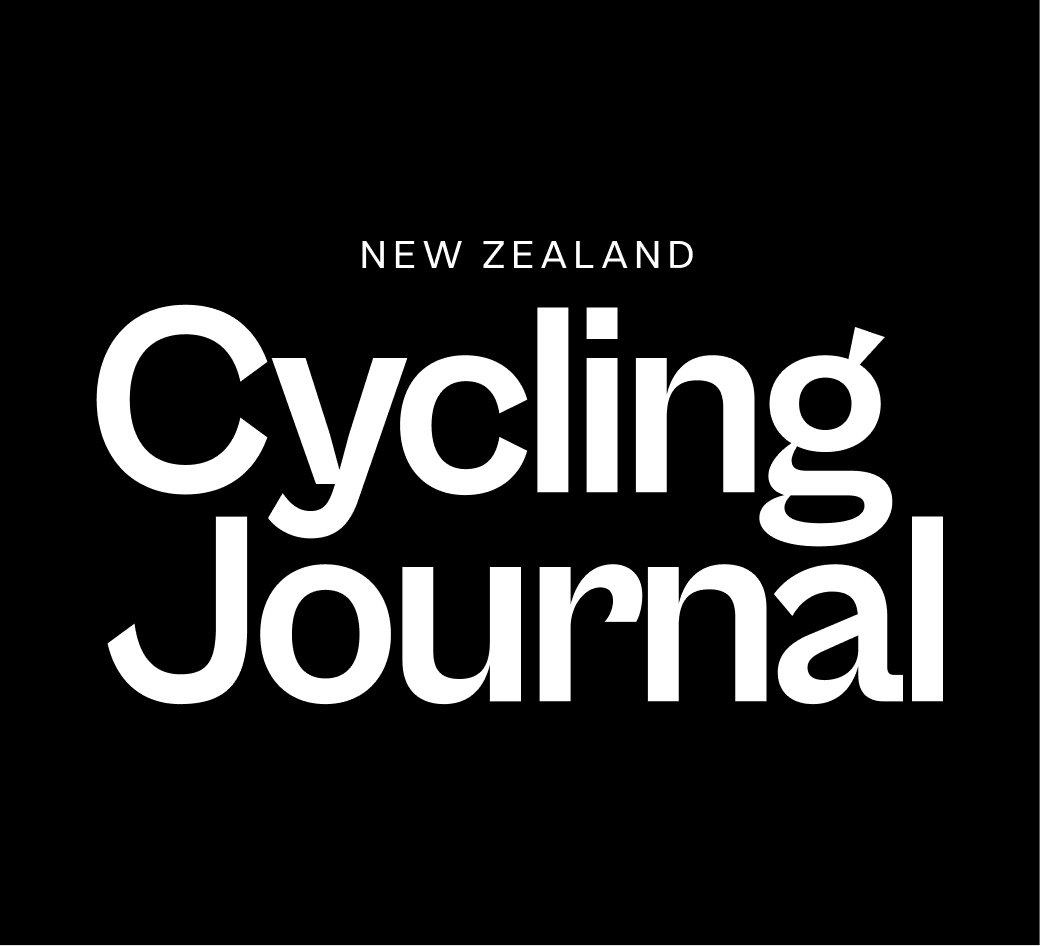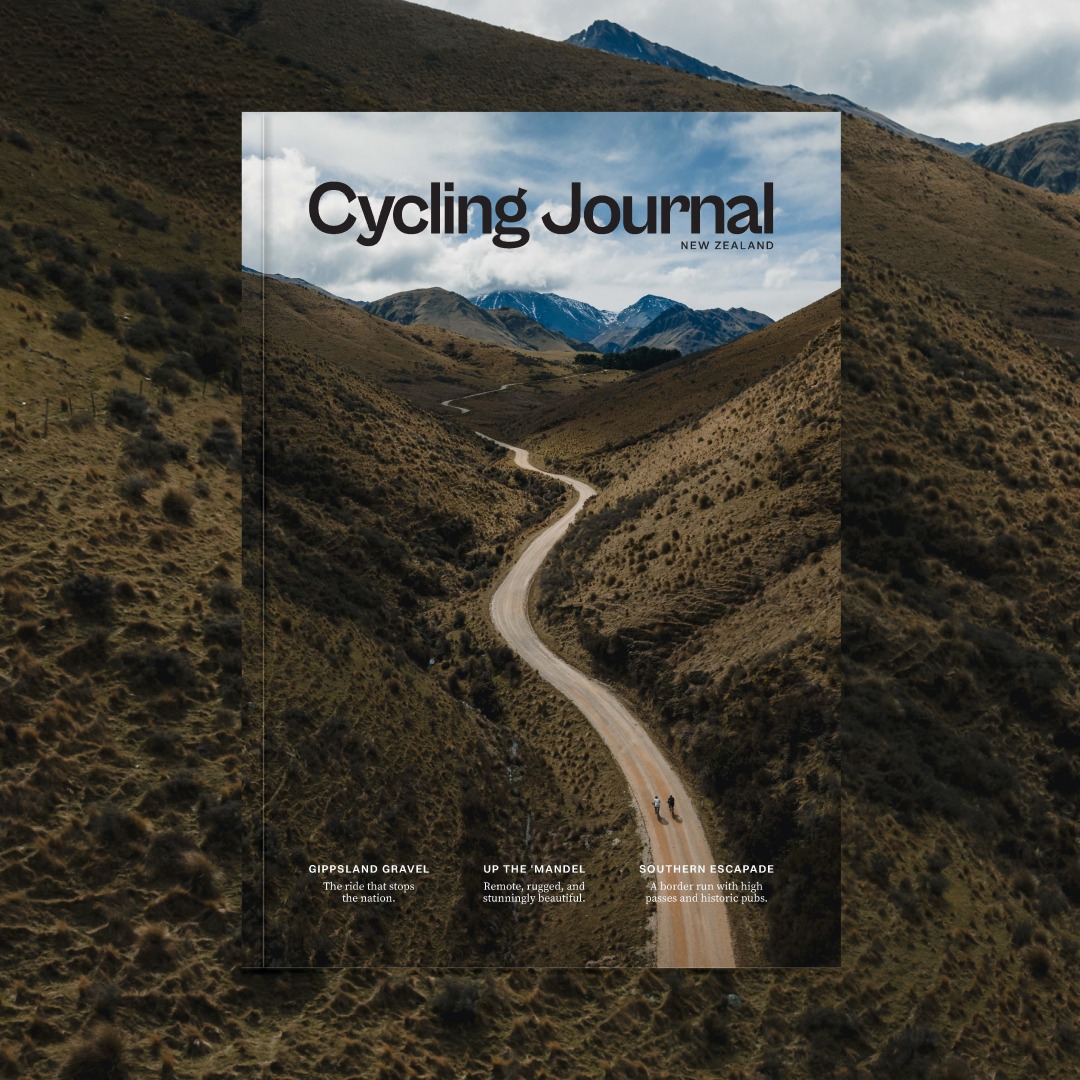Words & Images Douglas Wright and Laura MacQueen
AFTER TWO FLIGHTS AND 13 HOURS IN THE AIR, MY PARTNER LAURA AND I TOUCHED DOWN AT CHINGGIS KHAAN INTERNATIONAL AIRPORT. THE SHEER SCALE OF MONGOLIA’S LANDSCAPE GREETED US AS WE DISEMBARKED. AN EXPANSIVE VALLEY LINED BY ROLLING GREEN HILLS THAT STRETCHED AS FAR AS THE EYE COULD SEE. HORSES ROAMED FREELY BEYOND THE AIRPORT’S FENCED-OFF LANDING STRIP, AND THE BOUNDLESS BLUE SKY SEEMED TO STRETCH INFINITELY IN EVERY DIRECTION. IT FELT AS THOUGH WE HAD LANDED AT THE EDGE OF THE WORLD, WITH THE MODEST AIRPORT TERMINAL THE ONLY PROOF OF HUMAN EXISTENCE.
“WELCOME TO MONGOLIA, THE WORLD’S MOST SPARSELY POPULATED COUNTRY,” I THOUGHT, WITH A SUDDEN REALISATION OF HOW SMALL I WAS IN THIS VAST EXPANSE.
This quickly changed as we sped the 52km along the motorway towards the capital, Ulaanbaatar, which houses almost half of Mongolia’s population. We would stay here for a few days to build up our bikes and get a few supplies. Gridlock traffic met us on the outskirts, along with Gers (yurts) and ramshackle buildings, while in the distance a large cluster of high-rises marked the central city. A thick smog hung in the air while cars honked, jostling for position on the road. The city quickly illustrated a clash of changing cultures. Traditional nomads fresh off the steppes bumped into Westernised businessmen against a backdrop of Gers, temples, Soviet apartments, modern shopping malls and soaring business towers.
Sandwiched between Russia and China, with democratic freedom only coming in 1990, Mongolia isn’t the sort of place you come across on a mainstream travel website. I had been drawn to visit the country after learning about the traditional nomadic culture at university. Questions about what ‘home’ meant to a nomadic society lingered in my mind and the vast network of dirt roads suggested the potential for great bikepacking.
After a challenging time at the railway station trying to communicate where and when we wanted to travel (further complicated by having bikes), we eventually had tickets for an overnight train from Ulaanbaatar to Erdenet. This would be the ride’s starting point, and from here we planned to cycle 1,400km. First, we would venture into Northern Mongolia and towards the border with Siberia, before crossing west to Lake Khövsgöl. From there, we would head south into central Mongolia and Terkhiin Tsagaan Lake. Finally, a traverse of the Khangai Mountains would bring us out to the city of Tsetserleg before a van ride back to Ulaanbaatar would complete the loop.
It felt liberating to clip into the pedals, turn the legs and feel the wind against my face. After months of staring at satellite images to create the route, the exhilaration of finally being on the ground was immense. We headed out of Erdenet, a comparatively small city based around copper mining, and it didn’t take long for the paved road to turn into dirt which then dissipated into a series of vague crisscrossing tyre tracks which traversed across the hills. We followed one set of tracks until they became too rough, then switched to the next worn path. Sometimes, the paths branched and converged. It became evident that these roads were in a constant state of change, demanding some flexibility in our navigation.
We soon reached the first town of Bugat, and got a glimpse of what we could expect going forth. A cluster of modest houses, each with a different coloured roof, a small store selling groceries, a restaurant, and a petrol station. We continued riding, leaving the town behind and heading into the hills once more. Amidst the sea of rolling green hills and sporadic dwellings, finding a spot to pitch our tent was a simple task and this soon became one of our favourite aspects of travelling here. From our tent, we watched the colours change in the sky as light faded from the hills. It was captivating, even if the landscape seemed alien to us.
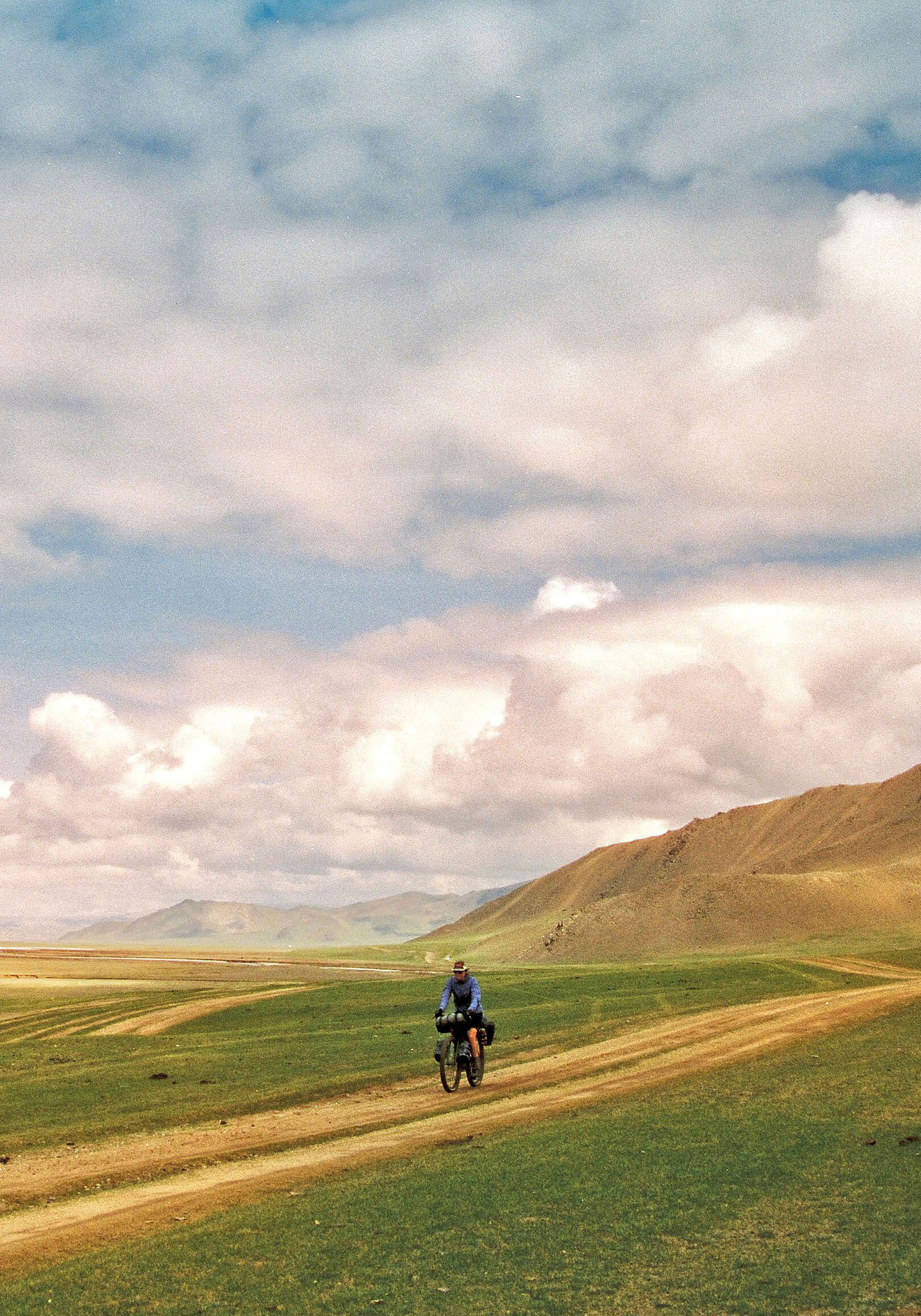
The next morning, we set off towards a paved road which we would use to quickly cover ground before venturing back into the remote hills. In 2020, all 21 regions were connected via paved roads to Ulaanbaatar, which marked a significant step in the country’s development. While these roads are littered with potholes and shared with wandering livestock, they still offer quicker travel for goods and services than the bumpy, crisscrossing dirt trails.
We reached the paved road, excited by some easier travel, however, the wind had other ideas. The initial excitement drained from our naïve faces as a punishing headwind slowed our pace to a crawl. The strong westerly wind did not let up, and neither did it the following day. Our goal of covering the distance in one day became the painful undertaking of two. Exhausted, we finally turned off the road and within twenty minutes it had vanished behind us in the vast landscape.
We headed north and the landscape shifted to tree- lined valleys and forested passes. The region had a different feel to it, with most people clustered in small developing towns with their benefits of electricity and small stores. It soon became clear that these towns expanded during the winter months, while the opposite was true in summer when people headed out and worked the land. We came across the beginnings of horticultural farms and, at one point, we crested a hill and were met with a new fence protecting a freshly ploughed field beyond. After a minor detour, we saw Gers equipped with satellite dishes and solar panels, a testament to the evolving culture even in these remote reaches.
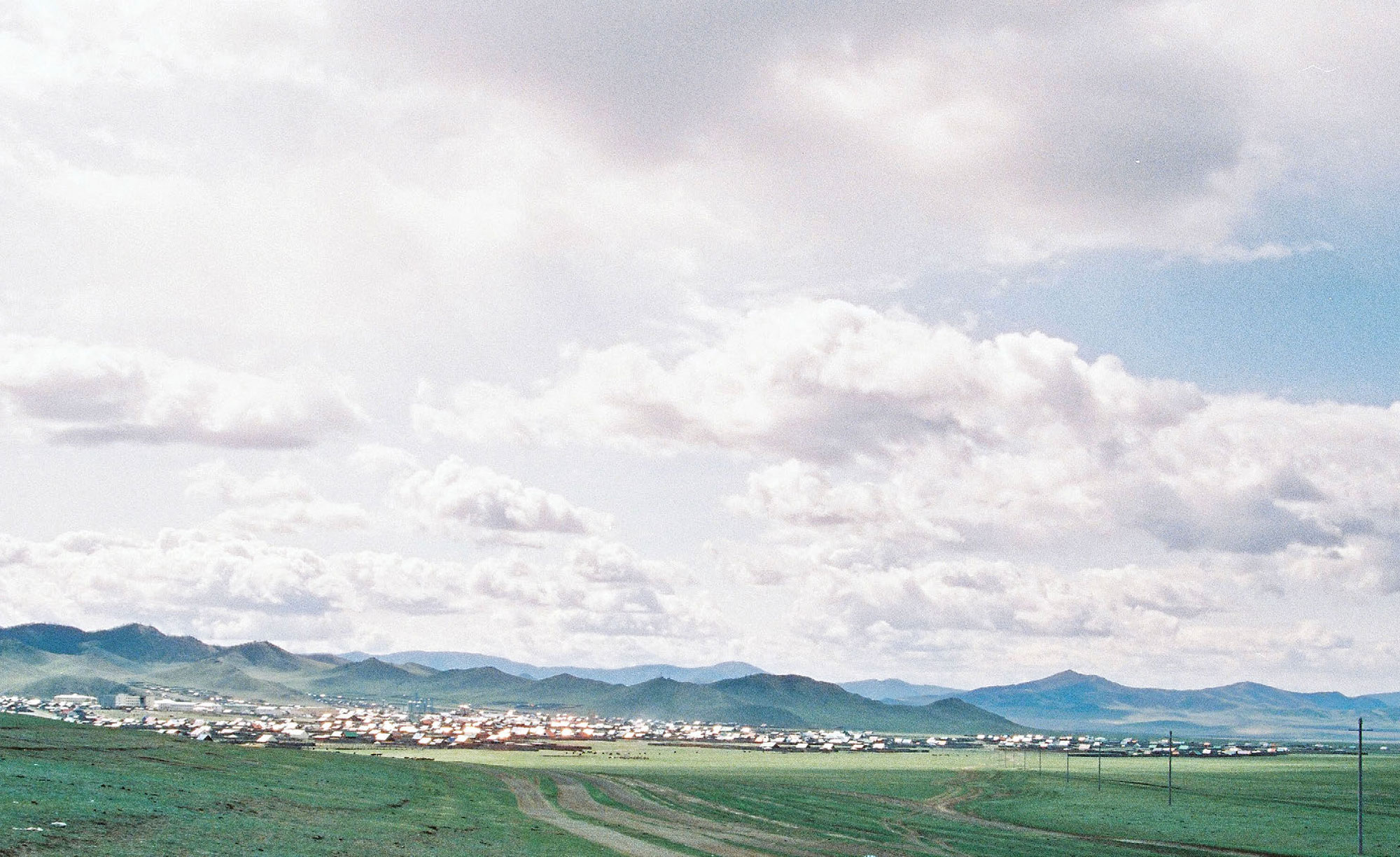
It felt liberating to clip into the pedals, turn the legs and feel the wind against my face. After months of staring at satellite images to create the route, the exhilaration of finally being on the ground was immense.
As we continued north, the colours around us changed, gone were any golden hues and instead greens and grey proliferated, not helped by the lingering wintry weather. The temperature dropped the closer we got to the Siberian border.
Waking up shivering in a tent is never a good feeling, especially when you’re already dressed in all your clothes. The cold seemed to emanate from deep within the earth and not even our insulated sleeping mats could protect us. The sound of the nearby stream had ceased, likely now frozen over. We clung to each other, sharing what body warmth we could while the seconds crawled by until the first glimmer of sunlight broke over the horizon. Our water bottles lay frozen in the vestibule, as I reached across to unzip the tent fly, revealing a deep frost. We quickly packed up our things and decided it was too cold for breakfast. Remaining dressed in all our layers we got moving again, however, my mind quickly started dreading the river crossing ahead.
Unfortunately, the cloud cover above us meant the sun’s warmth was subdued as we cycled up the water had created its own Arctic microclimate. My naïve idea when planning the route was for us to camp here and enjoy a refreshing swim! But now all we wanted was to find somewhere warm to hide away. Luckily, we found this in a guesthouse Ger located at the southern end of the lake. The circular shape, devoid of any windows, transported us away from the freezing landscape. The central fireplace provided heat, while the smooth curving walls cradled us. A place to hide and forget about the exterior world, as I’m sure the Mongolians often do in the depths of winter.
Following a day of rest, we eagerly set off southward toward Terkhiin Tsagaan Lake. After days of traversing expansive valleys lined with trees, we welcomed a change in scenery as we followed a narrow river with rocky outcrops. Soon, we reached the city of Mörön and were surprised to find only one guesthouse open. The 2018 Lonely Planet guide we carried proved outdated, a consequence of the pandemic’s impact on tourism businesses. This was our first city since leaving Erdenet, and we seized the opportunity to stock up on a more diverse valley. Eventually, we reached the point where we had to cross the river. While it wasn’t particularly deep, it was clear that wet feet were inevitable. By the time we reached the other bank, my feet stung with pain, and the wet shoes offered little hope of regaining warmth any time soon.
Ahead, the small town of Chandmani-Undur beckoned and we managed to find the only store open. The shop owner, instantly sensing our discomfort, motioned for us to join her behind the counter where a fireplace crackled. She called out to her husband, and before we knew it, we were savouring steaming hot mutton soup and sipping an instant coffee for breakfast. It was an unexpected act of kindness and set us in a better mood. Spurred on by this, and with thoughts of getting to Lake Khövsgöl, we left the town. As the day progressed the temperature seemed to drop, the closer we got to the lake. When we finally reached the lake’s shore, I was stunned to find it entirely frozen. The massive, 136km long body of frozen range of supplies – a welcome departure from our diet of kimchi ramen and stale bread with jam.
Leaving Mörön, we planned to ascend a high pass before threading our way through a series of remote hills on our way to Terkhiin Tsagaan Lake. We quickly made our way through the foothills while, up ahead, the mountains appeared to be shrouded in stormy weather. The drizzle quickly turned to sleet, which quickly turned to snow as we ascended towards the high pass. The vicious cold that came with these changes was a surprise, and it felt too late to stop and put on more layers as we became engulfed in the blizzard.
We had two options – turn around and wait for better weather or press on over the pass and shelter in our tent in the valley below. A glance at the elevation profile gave me hope we were nearing the top and through chattering teeth and gusts of wind I yelled back to Laura that we were almost there. The mountain wasn’t done with us yet, however, and a final pinch reduced us to walking.
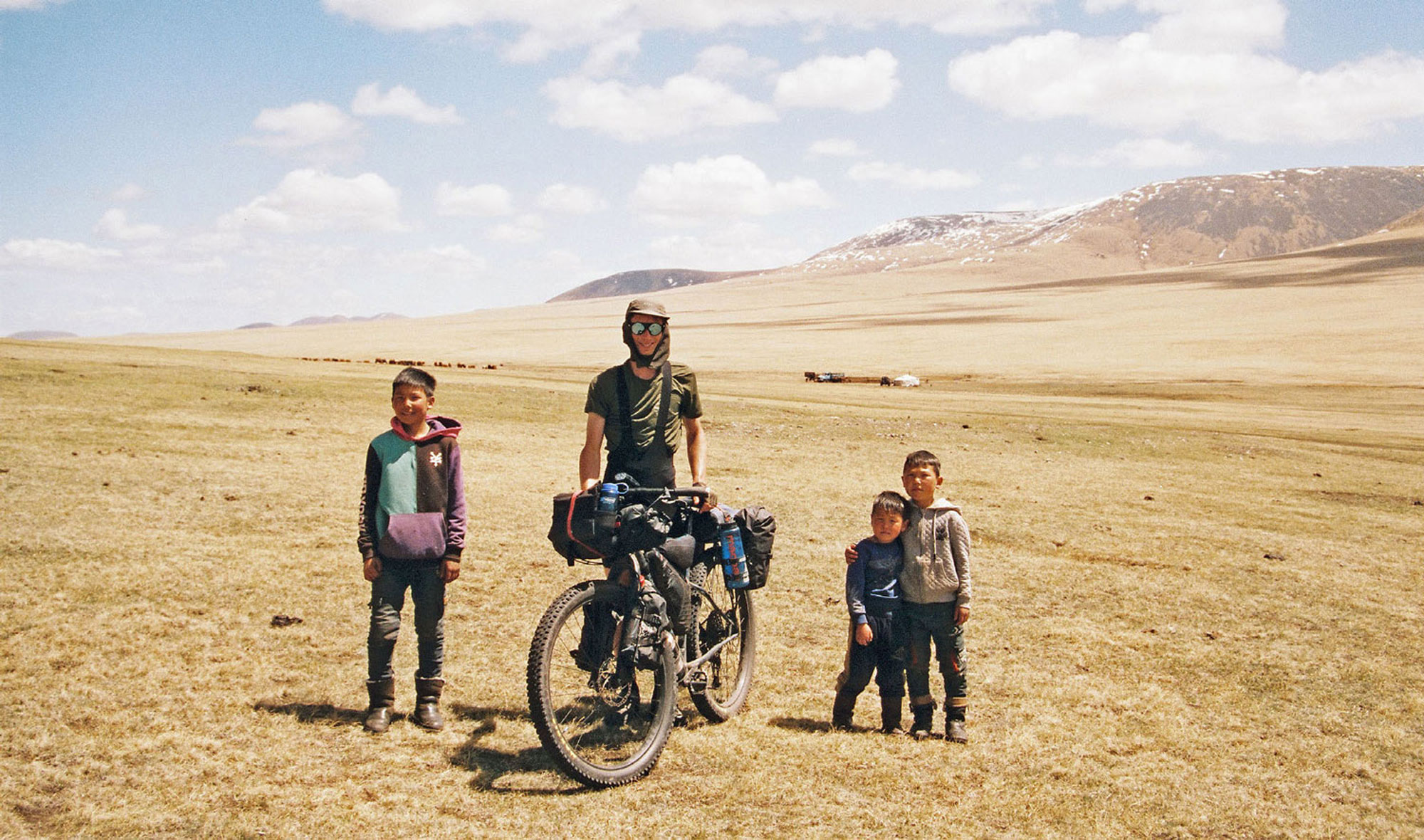
Eventually, we reached the point where we had to cross the river. While it wasn't particularly deep, it was clear that wet feet were inevitable. By the time we reached the other bank, my feet stung with pain, and the wet shoes offered little hope of regaining warmth any time soon.
With shivering bodies, we crested the pass and were surprised to see a building with a few cars and motorbikes parked out front – an unexpected sign of life in this remote and desolate area.
The door flung open, and we were quickly dragged inside by the owner. Inside, a bunch of people sat around eating Khuushuur (deep-fried mutton empanadas) and drinking beer while waiting out the blizzard. A bowl of steaming hot milk tea was thrust into my frozen hands, which were still locked in the shape of my handlebars. Space beside the fire was quickly cleared for us. The storm raged outside, visible through the accumulating snow on the windows. Thoughts of leaving the warm and cosy restaurant faded as we realised we were stranded.
The owner had known this when she invited us inside, and had already prepared a space for us to lay out our sleeping bags. The afternoon slowly gave way to night, with people coming and going, all grateful for this warm shelter in an otherwise remote and barren landscape. “Where’s summer?” I asked the owner through Google Translate.
“Nowhere to be seen,” she said with a shake of her head. “This is not normal for May.” A conversation followed through a mixture of charades and Google Translate, with the people around joined in and claiming we were crazy to be cycling, while both parties shared stories and photos about their respective cultures. On one of the walls hung a portrait of Chinggis Khan, who they passionately told us about. The most famous Mongolian, who managed to unite the people and laid the foundations for one of the largest empires in history.
As the first day of June and therefore ‘summer’ dawned, we waved goodbye to our newfound friends and cycled along a snow-lined road. Now on the other side of the hill, we quickly dropped down below the snow line and travelled through remote rolling hills. The cloud hung in the valleys while layer upon layer of hills stretched in front of us. Eventually, we started following a larger valley and the hills stretching skywards turned into mountains. The weather had started to warm a little and it was dry, meaning we could stop to enjoy the surrounding landscape. While initially the landscape had appeared foreign, we now felt at ease setting up the tent, chatting to inquisitive locals and sleeping amongst the roaming horses and goats.
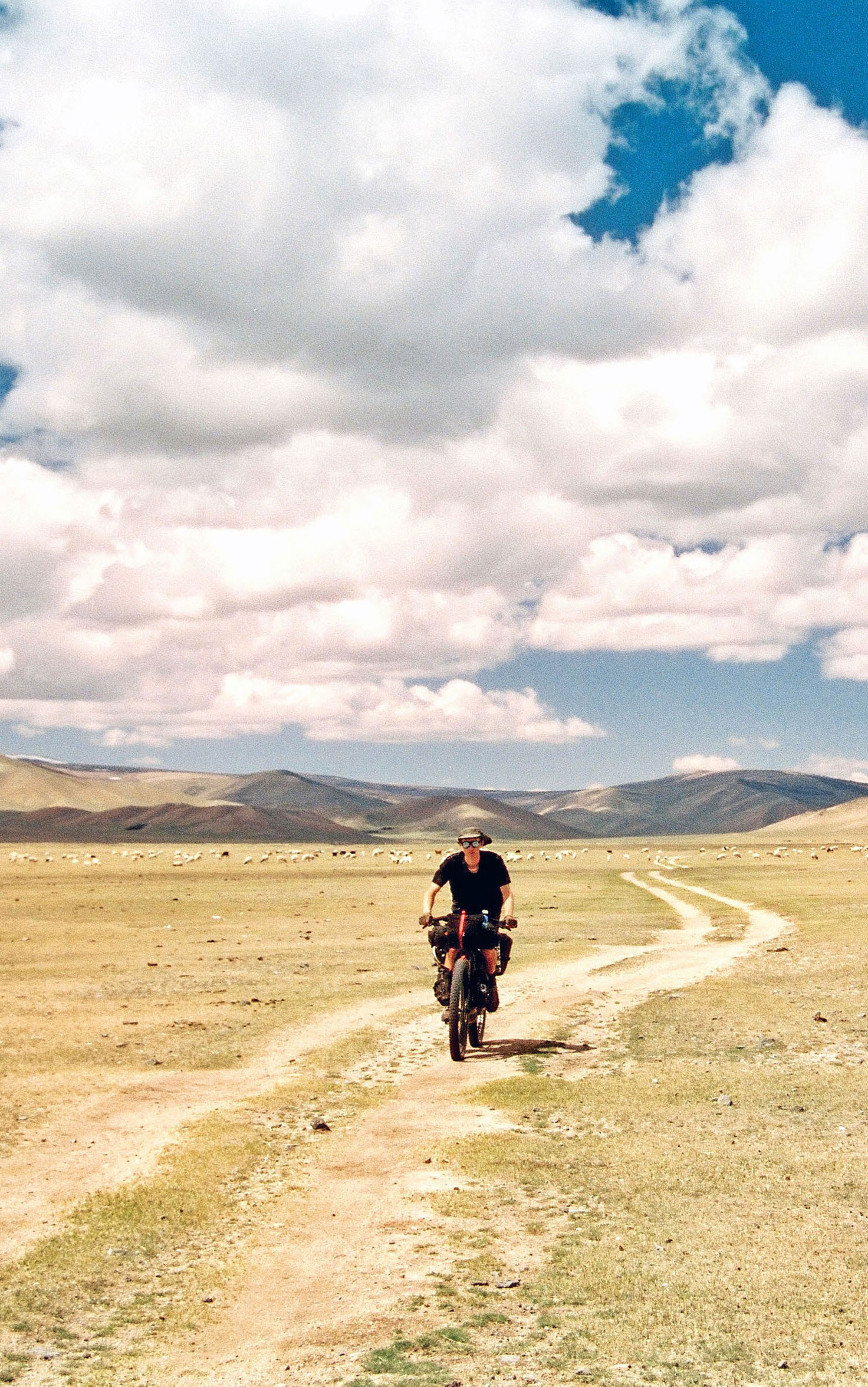
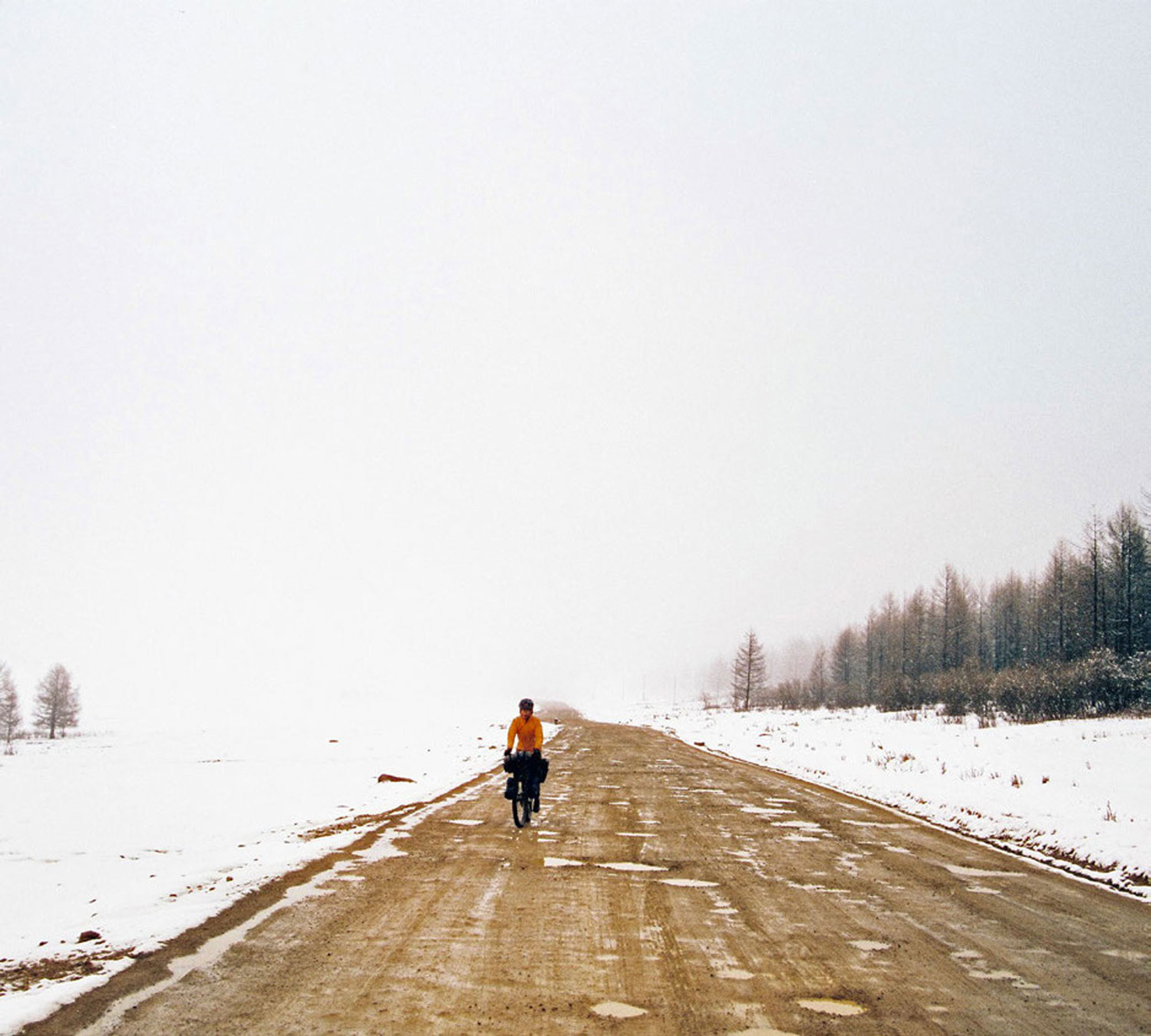
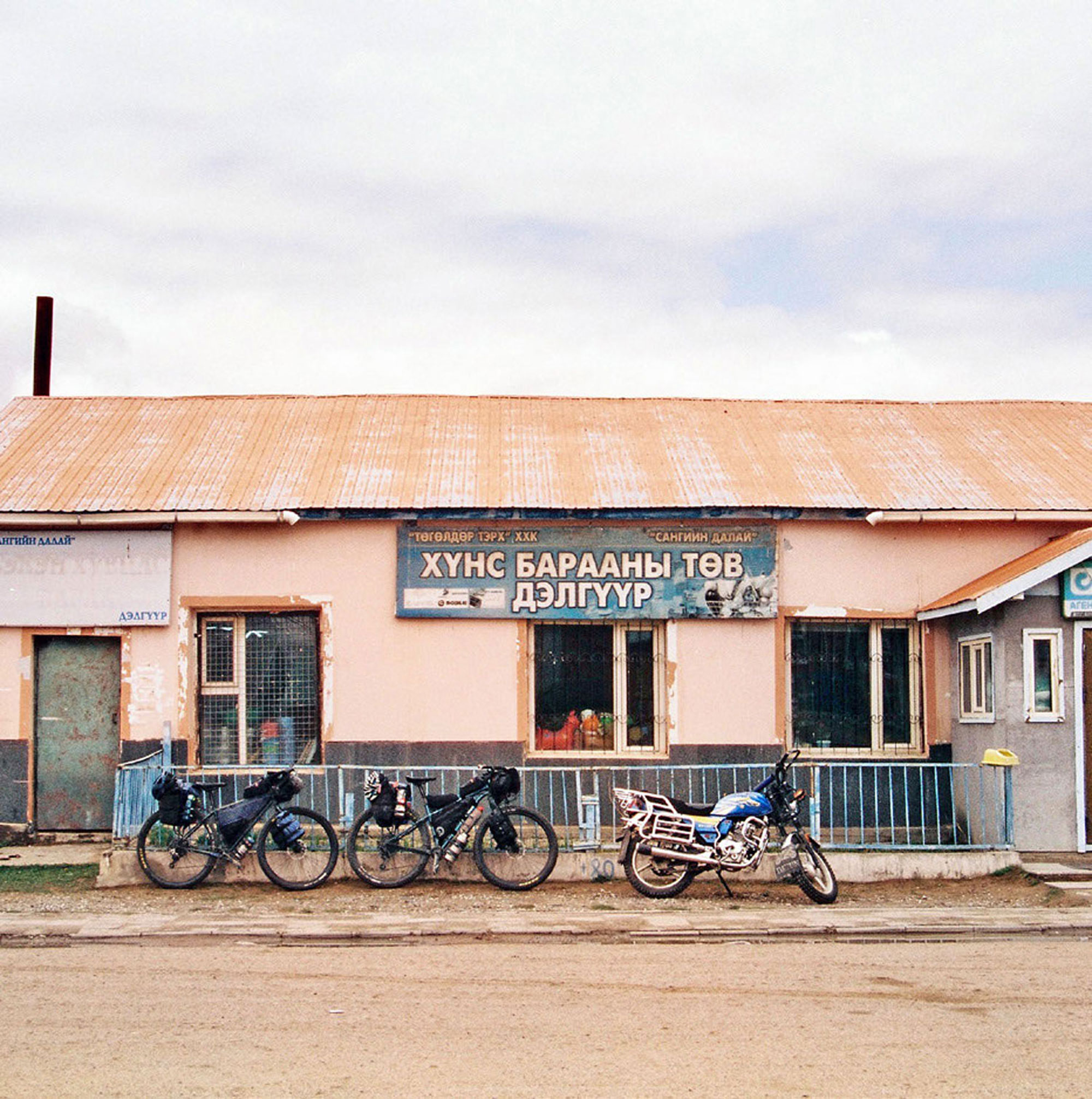
While initially the landscape had appeared foreign, we now felt at ease setting up the tent, chatting to inquisitive locals and sleeping amongst the roaming horses and goats.
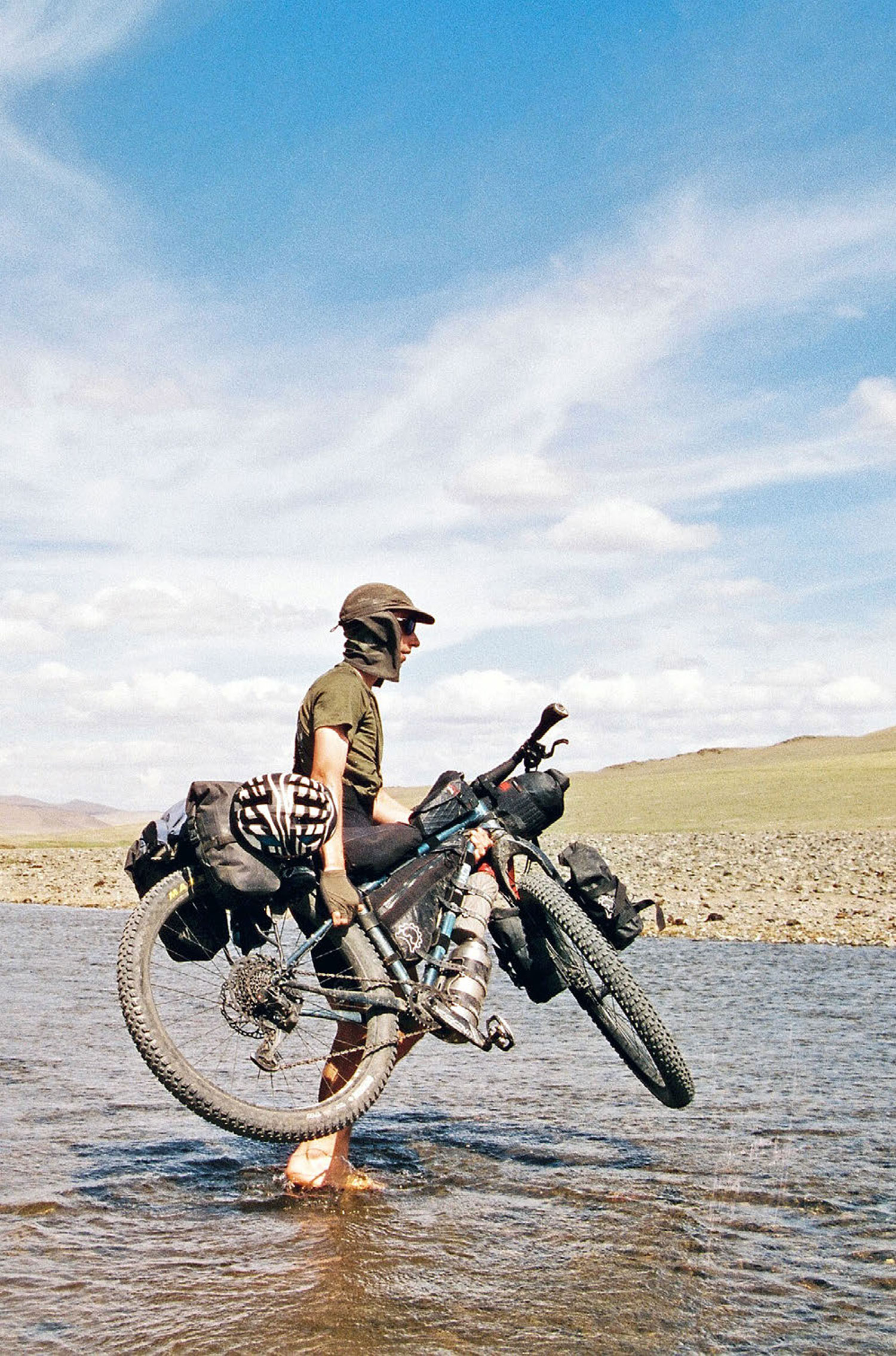
After three days of heading south, we got our first glimpse of the Khungai Mountains as we reached the crest of a hill. They stood imposing, covered in snow from the storm. They were still 200km away, but seeing them dressed in white, we decided to take it slow and let the snow melt as much as possible before reaching them. After following a river, we turned off and crested a pass and were amazed to see another glistening, frozen white lake ahead of us – Terkhiin Tsagaan Lake. Now with the weather starting to warm up, camping nearby was a pleasurable experience, even if the icy water kept us from jumping in the lake.
After a leisurely start, we left the lakes behind and embarked on the most remote section of the trip, a traverse of the Khangai Mountains. We passed a final town to resupply and started gaining elevation as we headed into the mountains. Our route took us up one vast valley before eventually turning off for a pass at the top. With the storm now gone, and the uncontested pastures up at higher ground, we overtook a shepherd moving his yaks. Just like that, summer had arrived and we were sweating in the heat for the first time since arriving in Mongolia. As we meandered our way up the valley, we passed dead livestock – a consequence of moving to higher ground too early in the season. The landscape seemed to change slowly, but the shadows moving across the hills almost had a mesmerising effect.
With the pass in sight, we set up camp and were starting to enjoy our dinner of noodles, when the shepherd we had passed hours earlier mustered his herd past us. A long and slow process of riding the motorbike behind the yaks and honking to keep them going. Hopefully, for his sake, it would be the last time he would need to do this for a few months.
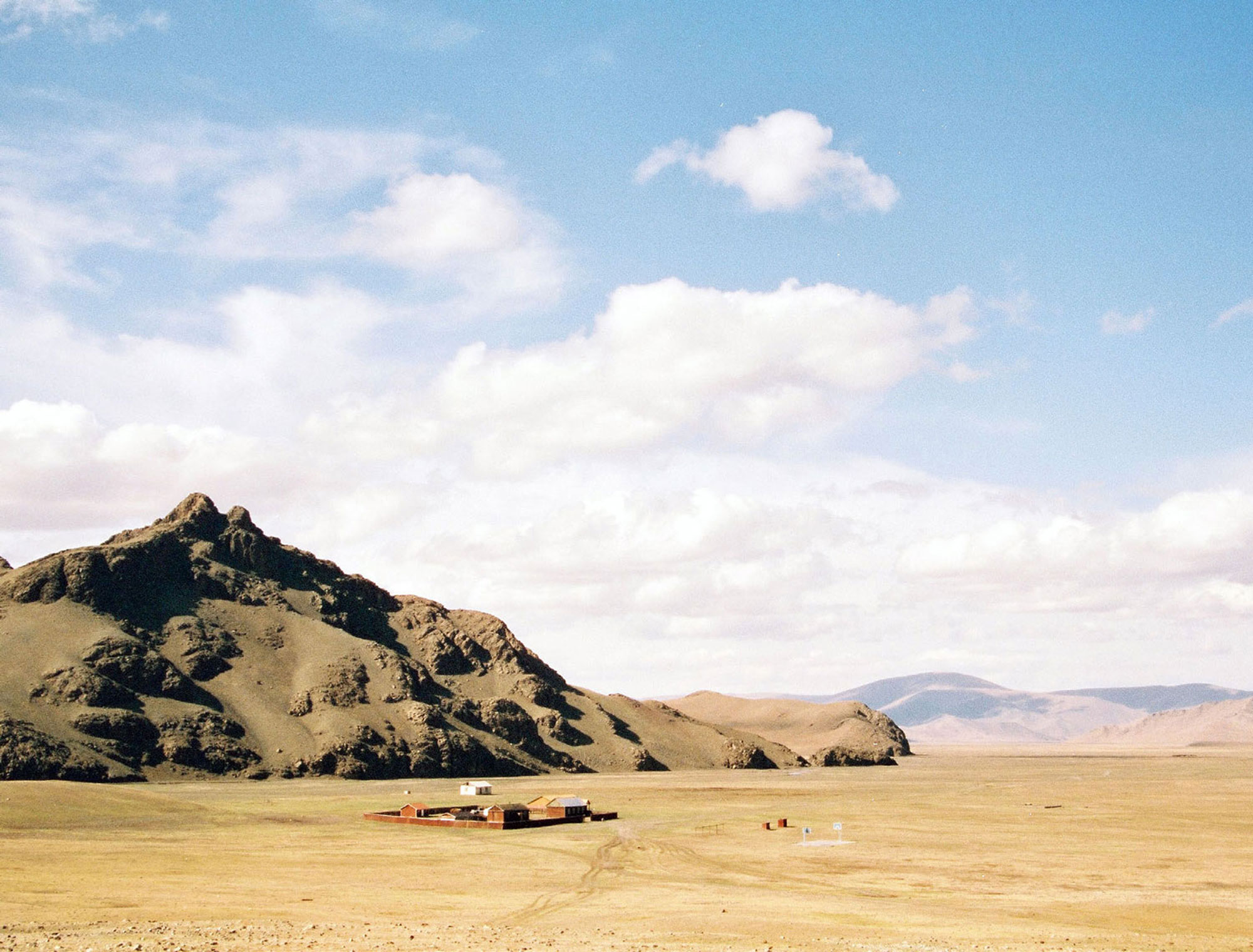
The next morning, we crested the high 2,700m pass with snow still visible on the surrounding mountain tops. A long descent down from these headwaters and eventually into a river valley ensued – a journey that consumed the rest of the day. Time seemed to lose meaning in the vast valley and we became mere passengers as waves of light and shade drifted across the landscape from the clouds above. I had begun to feel comfortable in these rolling hills and vast valleys, a contrast to when I had first stepped off the plane 21 days ago. Perhaps this comfort of being in the land was similar to the feeling of ‘home’ the Nomads found.
After covering 1,410 kilometres and ascending 19,700 metres, we entered Tsetserleg, weary, dirt- covered, yet profoundly satisfied. We had travelled through a nation of captivating contrast that had unfolded from underneath our tyres. We had ventured from the dense forests and frozen lakes of the north to the sweeping steppes and green hills of central Mongolia. From remote mountain passes to villages where we were welcomed with curiosity and warmth. From temperatures that had us shivering in our tent, to sweltering ascents up steep hills. It had been a journey along infinite dirt roads that pushed our limits, but had rewarded us with breathtaking scenery, and granted us a glimpse into the unique culture of Mongolia.
